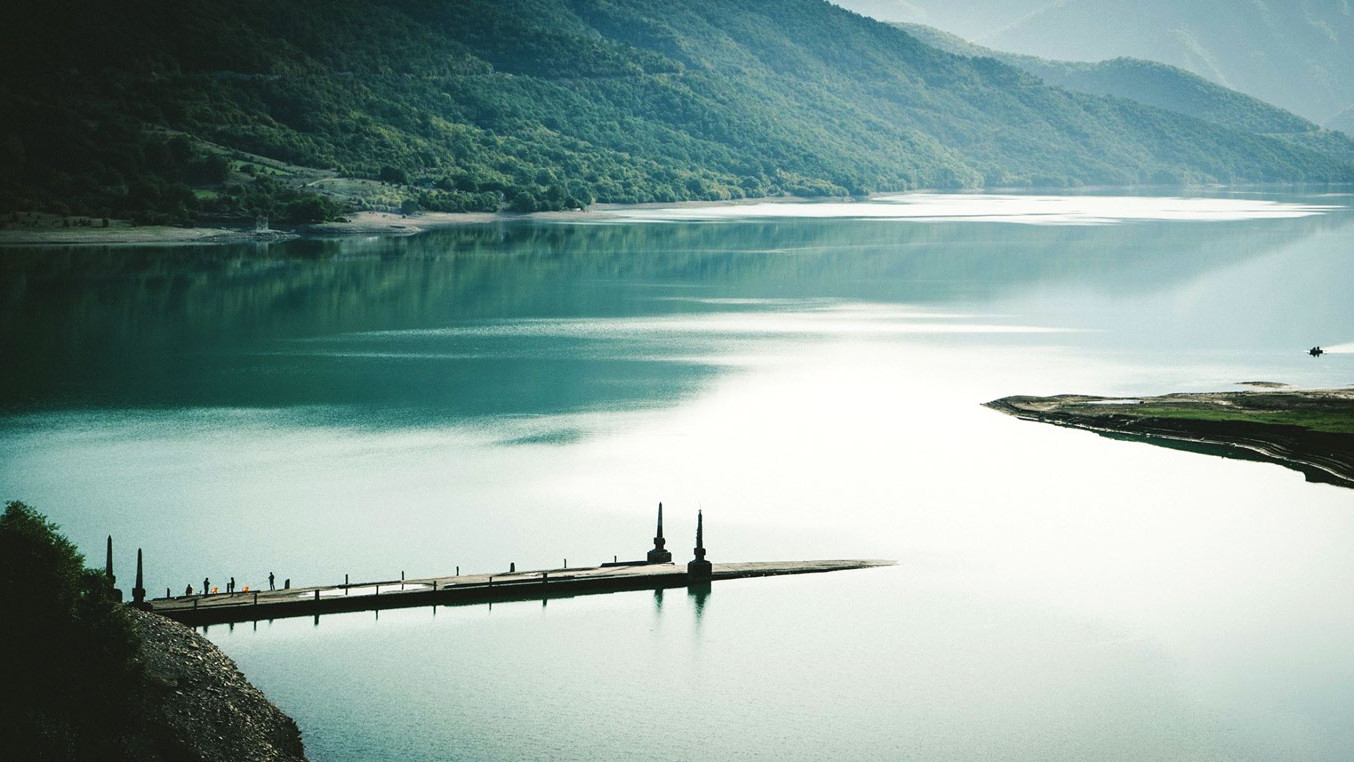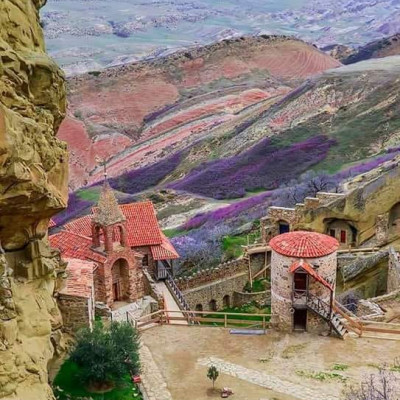
The hair-pin bends of the Georgian Military Road had already put goose-bumps on my arms when the trees suddenly opened and a sheet of liquid turquoise filled the valley—Zhinvali Reservoir. Just 70 km north of Tbilisi, this 11.5 km² artificial lake spreads like a sapphire between the forested ridges of Kartli, Alevi and Gudamakari. The dam that tames the twin Aragvi rivers was finished in 1985, delivering 130 MW of hydro-power and most of the drinking water that gushes from capital-city taps. Yet, standing at the viewpoint, it’s hard to think about megawatts; the scene looks painted.
Closer to the shore rises the stone silhouette of Ananuri, a 17th-century fortress-church complex whose conical domes are perfectly mirrored in the glassy water. Locals still debate whether the view is better at dawn, when morning mist hugs the battlements, or at sunset, when peach-coloured alpenglow slides down the slopes.
Zhinvali keeps its own secret too. Before the dam, a 12th-century Church of the Holy Cross stood on the riverbed. Today, as the reservoir’s level rises and falls, the ruins spend half the year submerged, half the year ghosting back into daylight—a time-lapse reminder that even mountains breathe.
Adventure is never far away. Downstream, the Aragvi Adventure Center and Jomardi Club rig up rafts and kayaks; guides shout paddle commands while snow-melt rapids slap the hulls. On shore, a rope-park threads through alder trunks and a zip-line fires you across a cove, feet skimming the wind-rippled surface. When the capillaries of adrenaline finally settle, campfire smoke curls into the night and the dam’s distant hum becomes a lullaby.
Whether you chase legends at Ananuri, dive for sunken history, or simply watch clouds paint patterns on cobalt water, Zhinvali Reservoir proves Georgia’s wild heart can be engineered—and still beat beautifully.






 Deutsch
Deutsch
 русский
русский
